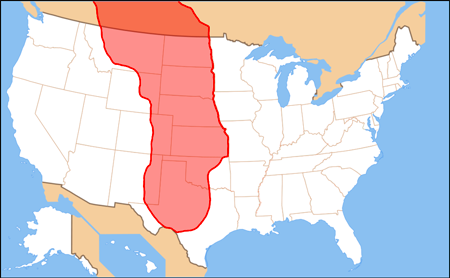

 |
 |
American nature
Milieu naturels États-Unis
Entorno natural de los EE.UU.
Amerikanischen Natur
 .
.

Tempererede regnskove: Nåleskovene i Pacific Northwest
US Earthquake Observatories. / : National Research Council,
1980.
- https://archive.org/details/usearthquakeobse024825mbp
CRS: Federal
Lands and Natural Resources: Overview and Selected Issues for the
113th Congress. / : Katie Hoover, 2014. 
'Four agencies (referred to in this report as the federal land
management agencies, or FLMAs) administer a total of 614 million
surface acres (95%) of federal lands: the Forest Service (FS) in
the Department of Agriculture (USDA), and the Bureau of Land
Management (BLM), Fish and Wildlife Service (FWS), and National
Park Service (NPS), all in the Department of the Interior (DOI).
The federal estate also extends to the energy and mineral resources
located below ground and offshore. These include about 700 million
onshore acres of the federal subsurface mineral estate that are
managed by BLM. In addition, the Bureau of Ocean Energy Management
(BOEM), also in DOI, manages approximately 1.7 billion offshore
acres located in federal waters within and beyond the U.S.
Exclusive Economic Zone. Not all of these acres contain extractable
mineral and energy resources.'
Amerikanske miljømyndigheder / U.S. Environmental
Protection Authorities: U.S. Department of the Interior, Bureau of
Land Management, 1946-. - http://www.blm.gov/wo/st/en.html
Environmental Protection Agency, 1970-. - http://www.epa.gov/
U.S. Department of the Interior, Fish and Wildlife Service
1940-.
- http://www.fws.gov/
U.S. Department of the Interior, National Park Service Opportunity
and Challenge : The Story of BLM / James Muhn, Hanson R. Stuart.
U.S. Department of the Interior, Bureau of Land Management, 1988. -
303 s. Officiel firmahistorie.
-
http://www.nps.gov/history/history/online_books/blm/history/index.htm

 The Great
Plains is a vast expanse of glasslands stretching from the
Rocky Mountains to the Missouri River and from the Rio Grande to
the coniferous forests of Canada—an area more than eighteen
hundred miles from north to south and more than five hundred miles
from east to west. The Great Plains region includes all or parts of
Texas, New Mexico, Oklahoma, Kansas, Colorado, Nebraska, Wyoming,
South Dakota, North Dakota, Montana, Alberta, Saskatchewan, and
Manitoba. The region, once labeled "the Great American Desert (See:
Excerpt From "The Plow That Broke The Plains": Producer: Pare
Lorenz, 1936.
The Great
Plains is a vast expanse of glasslands stretching from the
Rocky Mountains to the Missouri River and from the Rio Grande to
the coniferous forests of Canada—an area more than eighteen
hundred miles from north to south and more than five hundred miles
from east to west. The Great Plains region includes all or parts of
Texas, New Mexico, Oklahoma, Kansas, Colorado, Nebraska, Wyoming,
South Dakota, North Dakota, Montana, Alberta, Saskatchewan, and
Manitoba. The region, once labeled "the Great American Desert (See:
Excerpt From "The Plow That Broke The Plains": Producer: Pare
Lorenz, 1936.USA har 71.862 tons atomaffald, som er midlertidigt oplagret i
mere end 30 stater, ifølge data indsamlet af AP.
GSN: Japanese Crisis Highlights U.S. Atomic Waste Safety Problem.
Thursday, March 24, 2011.
Our western empire, or, The new West beyond the Mississippi
[microfilm] : containing the fullest and most complete description,
from official and other authentic sources, of the geography,
geology and natural history (with abundant incidents and
adventures), the climate, soil, agriculture, the mineral and mining
products, the crops, and herds and flocks, the social condition,
educational and religious progress, and future prospects of the
whole region lying between the Mississippi and the Pacific Ocean :
to which is added the various routes, and prices of passage and
transportation for emigrants thither, the laws, regulations and
provisions for obtaining lands from the national or state
governments or railroads, counsel as to locations and procuring
lands, crops most profitable for culture, mining operations, and
the latest processes for the reduction of gold and silver, the
exercise of trades or professions, and detailed descriptions of
each state and territory, with full information concerning
Manitoba, British Colombia, and those regions in the Atlantic
States adapted to settlement, by those who do not wish to go west,
and statistics of crops, areas, rainfall, etc. (1881). -
http://www.archive.org/details/cihm_24348
Ørkenområder: Chihuahuan Desert ; Great Basin Desert.